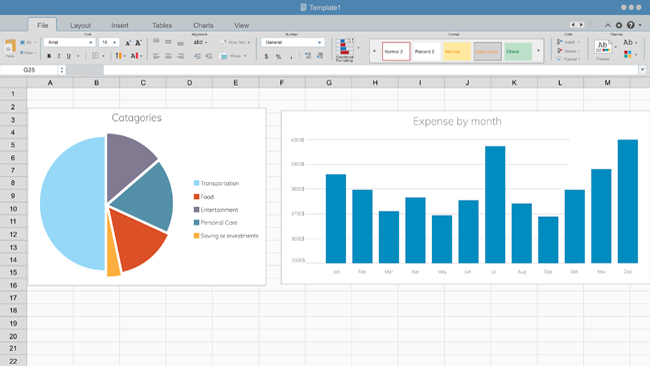The month-end close process is a critical aspect of financial management for organizations. Traditionally, Excel spreadsheets have been the go-to tool for managing financial data during this process. However, as businesses grow in complexity and data volumes increase, relying solely on Excel is no longer sufficient. Today, organizations are embracing automation software to streamline their month-end close and overcome the limitations of Excel. Let’s explore the challenges of using Excel for month-end close and the benefits of automation for a more efficient and accurate financial close.
The Limitations of Excel for Month-End Close
Excel has long been the backbone of financial management and reporting, including the month-end close process. However, as organizations expand and financial data becomes more intricate, Excel’s limitations start to surface. Here are some common challenges of relying on Excel for month-end close:
- Manual Data Entry and Errors: Excel requires manual data entry, which is prone to human errors. Even a minor mistake in a formula or a misplaced decimal point can have significant repercussions on financial statements and decision-making.
- Version Control and Collaboration: When multiple team members work on the same Excel file simultaneously, version control becomes a nightmare. It’s challenging to track changes, consolidate updates, and ensure data integrity.
- Lack of Workflow Automation: Excel lacks built-in workflow automation capabilities, making it difficult to automate repetitive tasks and enforce standardized processes. This results in wasted time, inefficiencies, and increased risk of errors.
- Limited Scalability: As organizations grow, the volume of financial data increases exponentially. Excel’s performance begins to degrade when handling large datasets, leading to slow calculations, crashes, and reduced productivity.
The Benefits of Embracing Automation for Month-End Close
To overcome the limitations of Excel, organizations are turning to automation software like SkyStem specifically designed for month-end close processes. Let’s explore the benefits of embracing automation:
- Increased Accuracy and Data Integrity: Automation software limits manual data entry, reducing the risk of errors and ensuring data integrity. With automated validations and controls, the software can flag anomalies and discrepancies, enhancing accuracy in financial reporting.
- Improved Efficiency and Time Savings: Automation streamlines the month-end close process by automating repetitive and administrative tasks. This saves valuable time for finance teams, allowing them to focus on value-added activities and analysis.
- Enhanced Collaboration and Version Control: Automation software provides a centralized platform for collaboration, enabling multiple users to work simultaneously on the same process. Audit trails are available, and different versions can be easily managed, ensuring a seamless collaboration experience.
- Standardized Workflows and Compliance: Automation software allows organizations to establish standardized workflows, ensuring consistent processes and reducing the risk of errors. This promotes compliance with regulatory requirements and internal control frameworks.
- Advanced Reporting and Analytics: Automation software offers robust reporting and analytics capabilities, enabling finance teams to generate real-time financial reports, perform variance analysis, and gain actionable insights. This empowers decision-makers with accurate and timely information.
- Scalability and Future-Proofing: Automation software is designed to handle large volumes of financial data efficiently. As organizations grow, the software can scale seamlessly, accommodating increased data volumes without compromising performance or accuracy.
The Transition Process: Moving from Excel to Automation
Transitioning from Excel to automation software for month-end close requires careful planning and implementation. Here are some key steps to consider:
- Identify Pain Points: Assess your current month-end close process and identify pain points and areas where automation can help. This analysis will help you understand the specific functionalities and features you need in an automation solution.
- Evaluate Automation Software: Research and evaluate different automation software options available in the market. Look for solutions that cater to the specific needs of month-end close processes, including task management, reconciliation, workflow management, and reporting.
- Define Requirements: Clearly define your requirements and priorities for the automation software. Consider factors such as integration capabilities, user-friendliness, scalability, security, and ongoing support. Engage with vendors, request demos, and read case studies to make an informed decision.
- Plan the Implementation: Work with selected vendors to create an implementation plan that includes timelines, resource allocation, and training requirements. Typically, implementation for this type of software is quick and has minimal disruption to the work environment.
- Training and Change Management: Provide comprehensive training to finance teams and stakeholders on how to use the automation software effectively. Emphasize the benefits and address any concerns or resistance to change. Develop a change management strategy to support a smooth transition and adoption of the new solution. Follow through continuously so there is more success with adoption.
- Continuous Improvement: As you start using the automation software, gather feedback from users and monitor the performance of the new system. Continuously evaluate and refine your processes to maximize the benefits of automation and address any emerging needs or challenges.
Excel has been a staple tool for finance professionals, but it falls short of meeting the evolving demands of the month-end close process. By embracing automation software, organizations can overcome the limitations of Excel and unlock numerous benefits. Automation improves accuracy, enhances efficiency, fosters collaboration, and enables advanced reporting and analytics. Moreover, automation software ensures standardized workflows, promotes compliance, and offers scalability for future growth. To stay competitive and optimize the month-end close process, it’s time for organizations to recognize the value of automation and transition from Excel to purpose-built software. By doing so, finance teams can streamline their operations, focus on strategic initiatives, and drive better financial outcomes.




Leave a comment
Have something to say about this article? Add your comment and start the discussion.